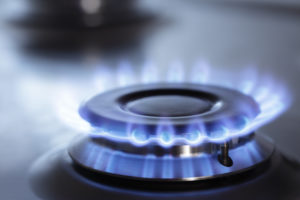 Natural gas continued its fall on Tuesday as weather forecasts kept pointing at cooler weather across key U.S. consuming areas, limiting demand for the fuel which is used for electricity generation.
Natural gas continued its fall on Tuesday as weather forecasts kept pointing at cooler weather across key U.S. consuming areas, limiting demand for the fuel which is used for electricity generation.
On the New York Mercantile Exchange, natural gas for September delivery traded at $3.468 per million British thermal unit, down 0.13% on the day. Prices held in range between days high of $3.488 and low at $3.472 per mBtu, the lowest since February 24. The fuel settled 0.97% lower on Monday, a fourth consecutive daily decline, and extending this weeks fall to over 2.8% after plunging 5.2% the preceding one.
Natural gas continued to lose ground as weather forecasting models kept on pointing at mild temperatures in key consumer areas. According to WSI Corp. in Andover, Massachusetts, temperatures will be mostly cooler in the lower 48 states between August 4 and August 13. AccuWeather Inc. said highest temperatures in New York on August 7 are expected to reach 73 degrees Fahrenheit, 11 below average.
Bob Yawger, director of the futures division at Mizuho Securities USA Inc. in New York, said for Bloomberg: “There’s a lot of negativity in the market when you’re seeing forecasts for highs in the 70s in New York. I’m hard-pressed to find something optimistic here for higher prices.”
Market players will also be keeping a close eye on this weeks EIA natural gas storage report. Last week, the Energy Information Administration said that U.S. natural gas stockpiles rose by 41 million cubic feet in the week ending July 19 and totaled 2 786 billion. The Natural Gas Storage Indicator was 12.5% lower than the same 7-day period last year, which equaled 3 185 billion cubic feet. Last week’s inventories were also 1.6% below the five-year average, which stand at 2 832 billion cubic feet. However, last week’s build was well above the preceding year’s 26 billion cubic feet increase during the comparable week, but below the five-year average gain of 53 billion.
The EIA reported that after a 25 billion cubic feet injection, stocks in the East Region were 120 billion below the five-year average. Meanwhile, stocks in the Producing Region were 45 billion cubic feet above the five-year average of 980 billion after an injection of 12 billion cubic feet.





